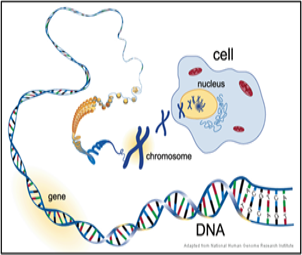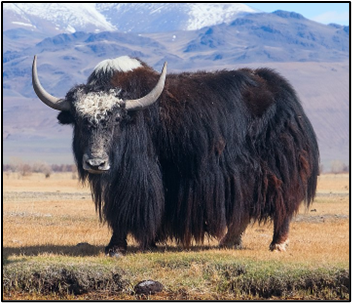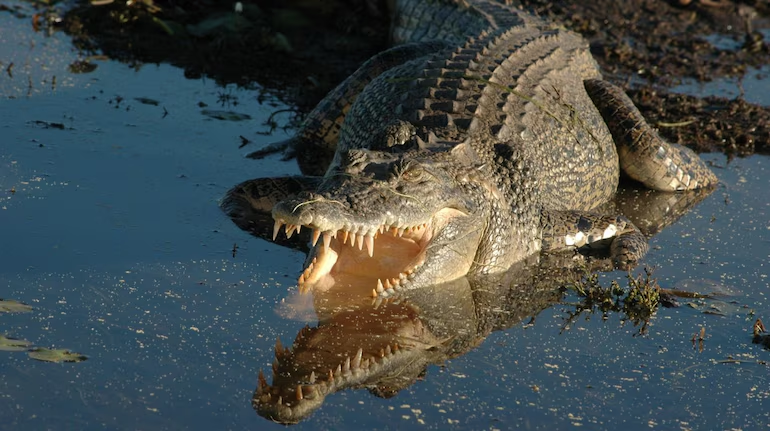- Courses
- GS Full Course 1 Year
- GS Full Course 2 Year
- GS Full Course 3 Year
- GS Full Course Till Selection
- Online Program
- GS Recorded Course
- NCERT (Recorded 500+ Hours)
- Polity Recorded Course
- Geography Recorded Course
- Economy Recorded Course
- AMAC Recorded Course
- Modern India, Post Independence & World History
- Environment Recoded Course
- Governance Recoded Course
- Science & Tech. Recoded Course
- International Relations and Internal Security Recorded Course
- Disaster Management Module Course
- Ethics Recoded Course
- Essay Recoded Course
- Current Affairs Recoded Course
- CSAT
- 5 LAYERED ARJUNA Mentorship
- Public Administration Optional
- ABOUT US
- OUR TOPPERS
- TEST SERIES
- FREE STUDY MATERIAL
- VIDEOS
- CONTACT US
ICAR Researchers unlock Indian Yak’s Genetic Secrets
ICAR Researchers unlock Indian Yak’s Genetic Secrets
16-05-2025

Significance: GS III; Environment and Biodiversity; Species in News;
Why in the News?
For the first time, Indian scientists at ICAR have fully mapped the entire genome of the Indian yak (Bos grunniens) at the chromosome level.
How is Chromosome-level genome assembly done?
- Genome assembly is the process of mapping out an organism’s complete DNA sequence.
- A chromosome-level genome assembly means that the DNA sequence is organized precisely along each chromosome, providing a detailed and accurate genetic blueprint of the species.
- To create this genome, scientists used advanced technologies such as long-read sequencing, which reads long stretches of DNA with high accuracy, and powerful computer analysis (bioinformatics) to organize this information into a complete, structured form.
- Why was Genome assembling necessary in the case of Yak?
- Understanding the yak’s genome, that is the complete set of its DNA, helps scientists learn how these animals thrive in such harsh environments and how to protect and improve their populations.
What are the Chromosomes?

- Chromosomes are thread-like structures (made of protein and a single molecule of deoxyribonucleic acid (DNA) located inside the nucleus of animal and plant cells.
- Passed from parents to offspring, DNA contains the specific instructions that make each type of living creature unique.
- Chromosomes keep DNA tightly packed and help ensure DNA is accurately copied and distributed during cell division.
- They also make sure reproductive cells have the correct number and structure of chromosomes, which is essential for healthy development. Mistakes in chromosome number or structure can lead to disorders like Down syndrome.
About Indian Yak (Bos grunniens)
- The Indian yak, often called the "ship of the Himalayas," is a large herbivore ungulate species.
- Habitat Area: The wild yak lives in high-altitude alpine tundra, grasslands, and cold deserts of the Tibetan plateau, now mainly found in China and India, including Himalayan regions like Arunachal Pradesh, Ladakh, Sikkim, and Himachal Pradesh. It is extinct in Bhutan and Nepal.
- Landmark Presence:
- Changtang Wildlife Sanctuary located in the Ladakh region of Jammu and Kashmir, India, is home to a large population of wild yaks.
- Sagarmatha National Park in Nepal is home to a population of wild yaks, as well as other iconic Himalayan species such as snow leopards and Himalayan black bears.
- Significance: These animals provide essential resources including meat, milk, and serve as pack animals for transport in difficult mountainous terrain. However, yaks face growing threats from shrinking grazing areas, climate change, diseases, and loss of genetic diversity.
- Conservation status:
- IUCN Red List: Vulnerable
- CITES: Appendix I
- Indian WildLife (Protection) Act, 1972: Schedule II
|
Also Read |
|
UPSC Foundation Course |
|
| UPSC Monthly Magazine | CSAT Foundation Course |





